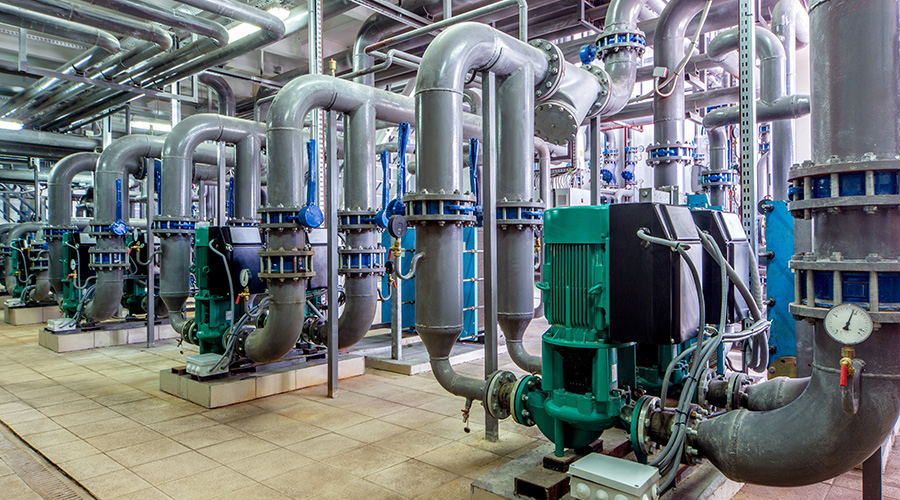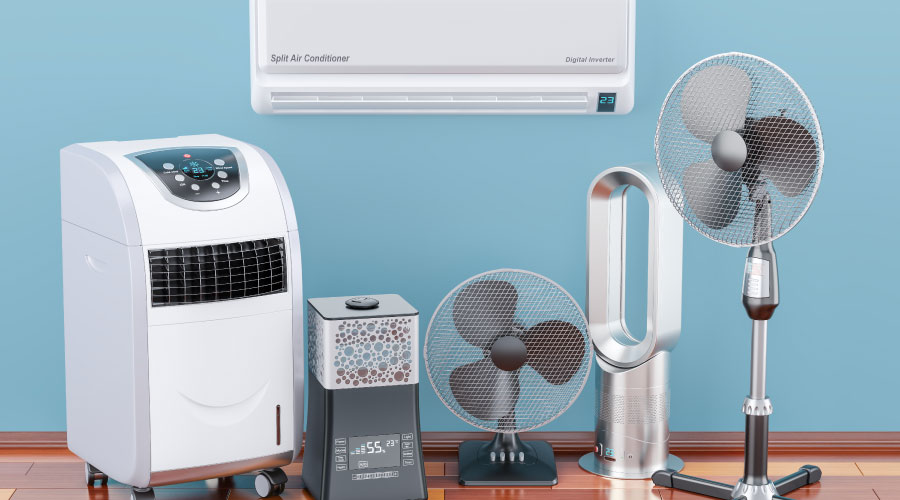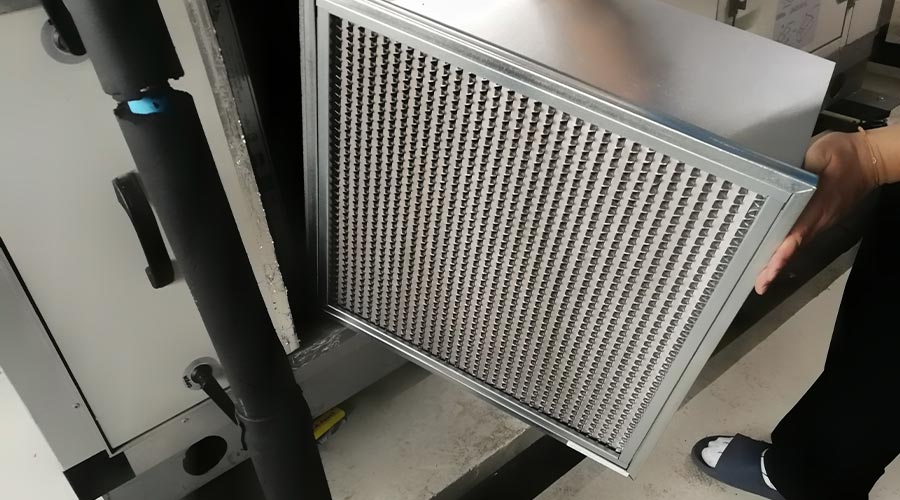Mix and Match to Clear the Air
Combining new-generation technologies with traditional measures can keep indoor environments healthier
Traditionally, air filters have been overlooked in the design, operation and maintenance of buildings. That all changed when engineering and maintenance managers faced increasing pressure to improve building indoor air quality (IAQ). They upgraded filter systems to remove more contaminants from the airflow. They modified HVAC system to gain a maximum possible efficiency from the filler system. And they set up schedules for inspecting and changing filters.
In response to the needs and demands of building owners and occupants, filter-system manufacturers have responded with new system designs and materials, with a goal of providing the level of performance desired without making the operation of the system cost-prohibitive. As a result, managers have a number of options when it comes to selecting a filtration system for their facility.
Today, managers buildings use four major types of filters systems: mechanical filters, electrostatic precipitators, gas and vapor filters, and ultraviolet (UV) light systems. All three system types are effective in removing many types of pollutants commonly found in buildings and HVAC systems. Selecting the system best suited to a particular application depends on the types and sizes of particular pollutants found in the application. Not all systems perform equally well in removing all types of particular pollutants.
Typical building air pollutants include atmospheric dust, bacteria, pollen, and smoke particles. The atmospheric dust particles typically range in size from 0.001 to 100 microns. Bacteria sizes range from 0.15 to 50 microns, while most pollen is between 10 and 100 microns. Smoke particles typically fall between 10 and 100 microns.
Mechanical Filters
Mechanical filters have long been the standard filtration system used in commercial and institutional facilities. They typically perform well in capturing particles ranging of 1-100 microns. Mechanical filters are available in a range of materials, styles, and efficiencies, making it fairly easy to match system performance to building needs.
One problem with mechanical filters is their impact on building-fan energy requirements. Higher requirements for efficiency and performance generally result in higher pressure drops across the filter system, which translates into higher fan energy requirements. Also, as filters become loaded with dust and other pollutants, fans require more energy to maintain the same air flow in the system.
A new generation of mechanical filters incorporates synthetic materials that carry a small electrical charge to attract and hold particles to the filter without resulting in high pressure drops, thus improving the energy efficiency of the fan system. The synthetic materials also offer the advantage of resisting the absorption of moisture. The combination of moisture and the pollutants trapped on a filter’s surface will create an ideal condition for bacteria growth.
Electrostatic Precipitators
Electrostatic precipitators use an ionizer to electrically charge particles in the system’s air flow. Downstream from the ionizer, charged parallel plates alternately attract and hold the charge particles. Effective in removing particles in the 0.001-10 micron range, electrostatic precipitators can filter pollen, bacteria, viruses, fungi, and smoke particles.
One of the most significant concerns involving the use of electrostatic precipitators is their generation of ozone, which is a natural byproduct of passing air through an electrostatic field. Manufacturers have designed new-generation electrostatic precipitators to minimize ozone generation.
Electrostatic precipitators offer very little resistance to the air flow within the HVAC system. As a result, they have almost no impact on fan energy requirements. While the systems do use some electricity to generate the electrostatic field, the energy use is minimal.
Gas and Vapor Filters
While mechanical filters and electrostatic precipitators can be effective in reducing particulate pollutants, they will do little to remove gaseous and vaporous pollutants.
These types of pollutants in buildings come from two common sources: fresh air drawn into the building by the the HVAC system, and off-gassing from synthetic materials used in building construction. These pollutants typically include various levels of ozone, nitrogen oxide, nitrogen dioxide, carbon monoxide, formaldehyde, and a wide range of organic compounds.
New generation of gas-phase filters can remove both gaseous and vaporous pollutants. These filters use an absorptive material, such as activated-carbon, to absorb the pollutant as small as 0.003 microns from the air flow. Most systems use disposable or reusable canisters placed into the air flow.
While the systems can effectively reduce the levels of gas and vapors within the building, they are expensive to install and to maintain. Depending on the size of the application and filtration rate required, the canisters can cause a moderate increase in fan energy requirements. Their use, therefore, is limited to critical applications with demanding requirements.
Ultraviolet-light Systems
The need to improve indoor air quality combined with the need to provide protection against the potential spread of biological organisms through the HVAC system has resulted in the more widespread use of UV filtration systems. Although UV light systems do not technically filter the air flow, they are very effective in eliminating biological contaminants.
The units include a bank of UV lights in the HVAC system’s air flow downstream from the main filter assembly. As air passes the lights, some of the biological contaminants carried by the air stream are killed. To be effective, the flow there must be slow enough to give the UV light enough time to act on the biological organisms.
While the systems are very effective against many of the biological contaminants commonly found in buildings, they have limited use against both anthrax and mold. System manufacturers are currently working on new systems designed to target these contaminants.
UV light systems cause only a very slight pressure drop within the system, so increases in fan energy requirements are negligible. The energy used by the lamps also is small in comparison to other system energy requirements.
Controlling Costs
To be effective in controlling the level of pollutants within a building without causing a significant increase in energy and operating costs, air filtration systems must match building requirements. In some cases, the most effective solution is a combination of systems, such as mechanical filters to capture particulate pollutants and ultraviolet (UV) lights to control biological pollutants.
Once installed, if the systems are to operate efficiently, they must be maintained properly. Dirty mechanical filters increase the pressure drop, forcing fans in variable-air-volume systems to operate at higher flow rates, using more energy.
Extremely dirty mechanical filters run the risk of physical damage as a result of very high pressure differentials across the filter. Filters must be changed regularly, preferably when the measured pressure drop across the filter reaches a certain point.
Electrostatic precipitators, while not subject to the pressure drop problems associated with mechanical filters, must be cleaned regularly. Without regular cleaning, contaminant buildup on the plates of the filter can break loose and be reintroduced into the air flow. Managers should establish a regular cleaning schedule for filters.
Gas and vapor filters are high- maintenance items, requiring regular recharging or replacement of the filter canisters. Technicians should monitor contaminants in the air flow downstream from the filter using canisters recharged or replaced when contaminant levels exceed the desired maximum level.
UV light filters require periodic cleaning of the lamps to prevent particulate buildup that would interfere with their operation.
With these steps, managers can help improve the quality of the air within their facilities without causing a large increase in their operating and energy costs.
— James Piper
|
Related Topics:











